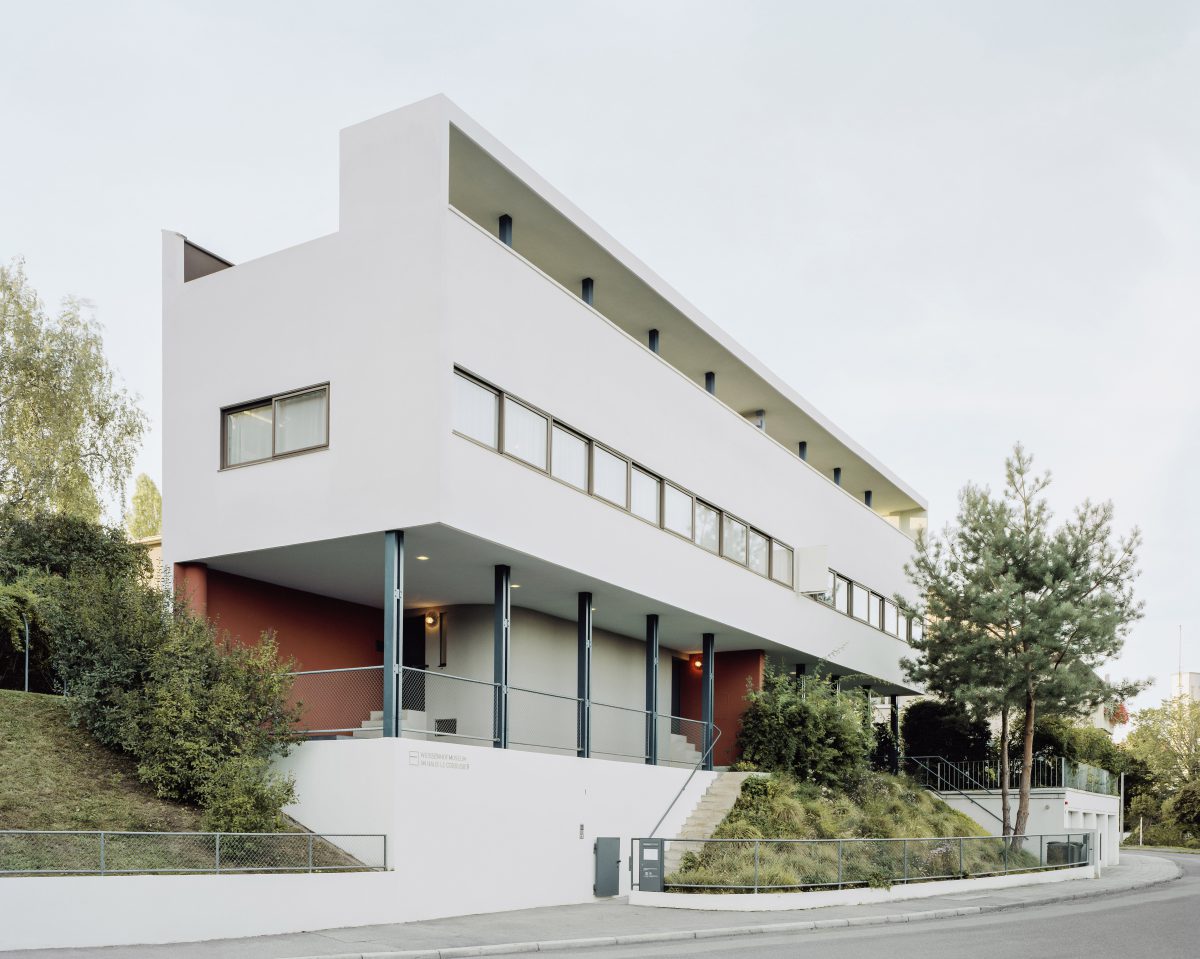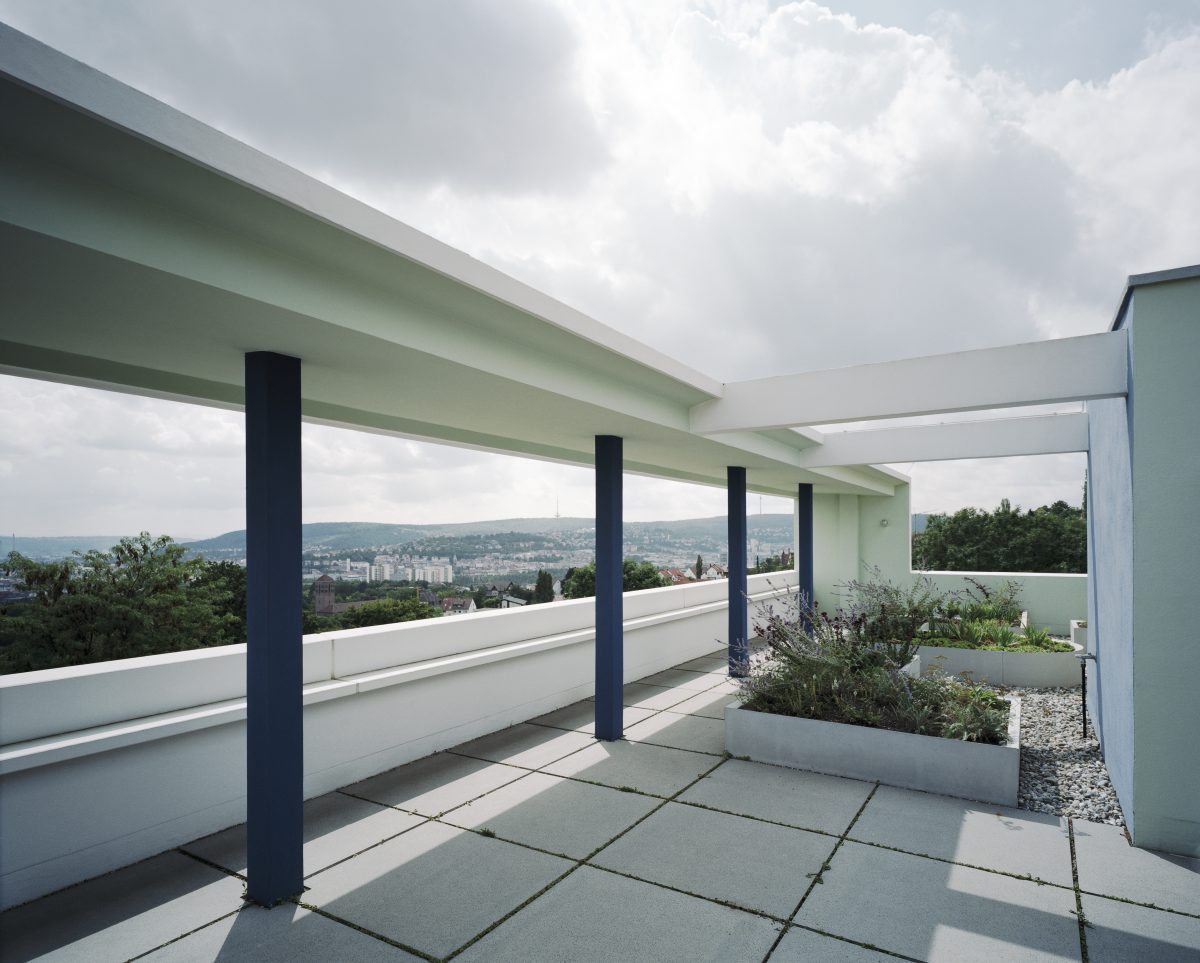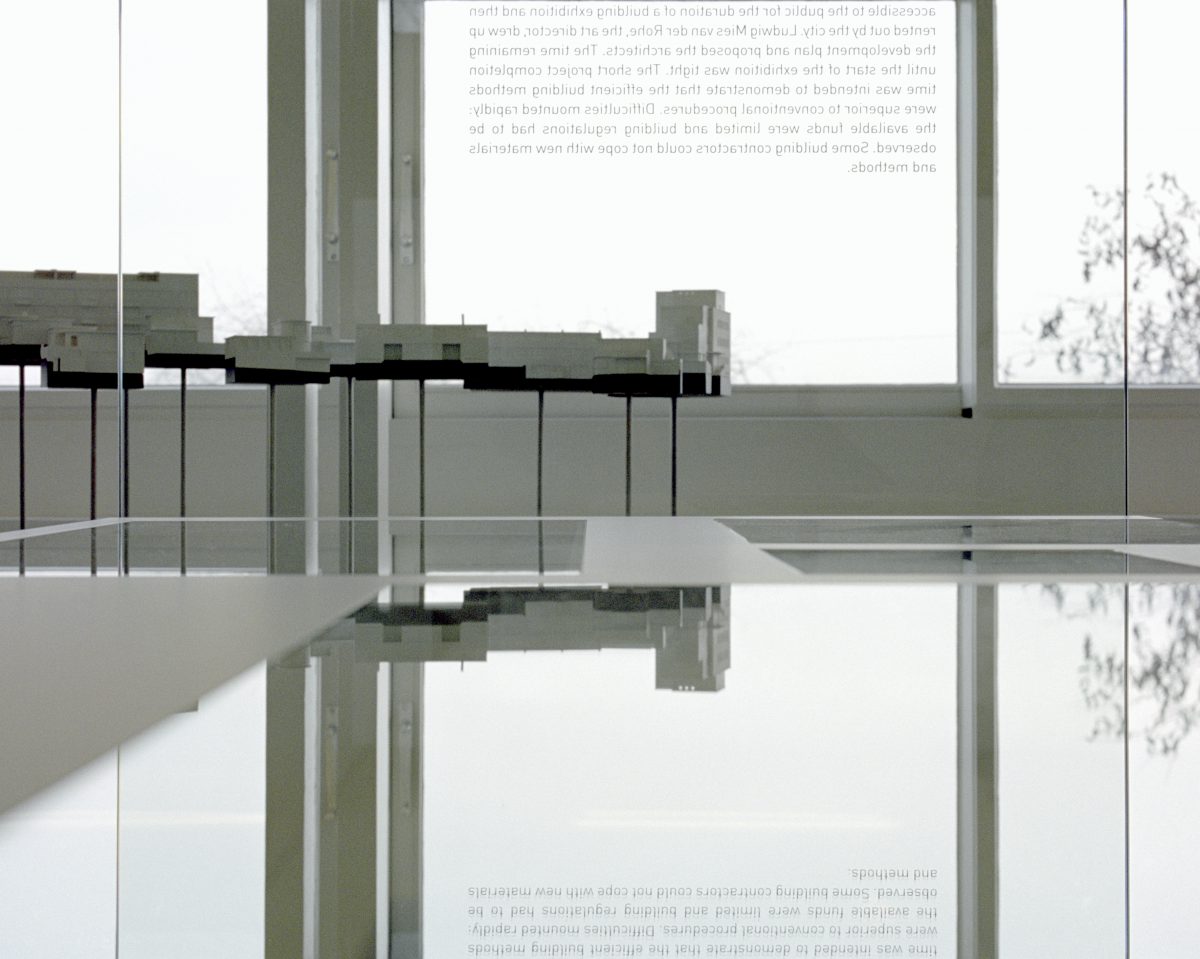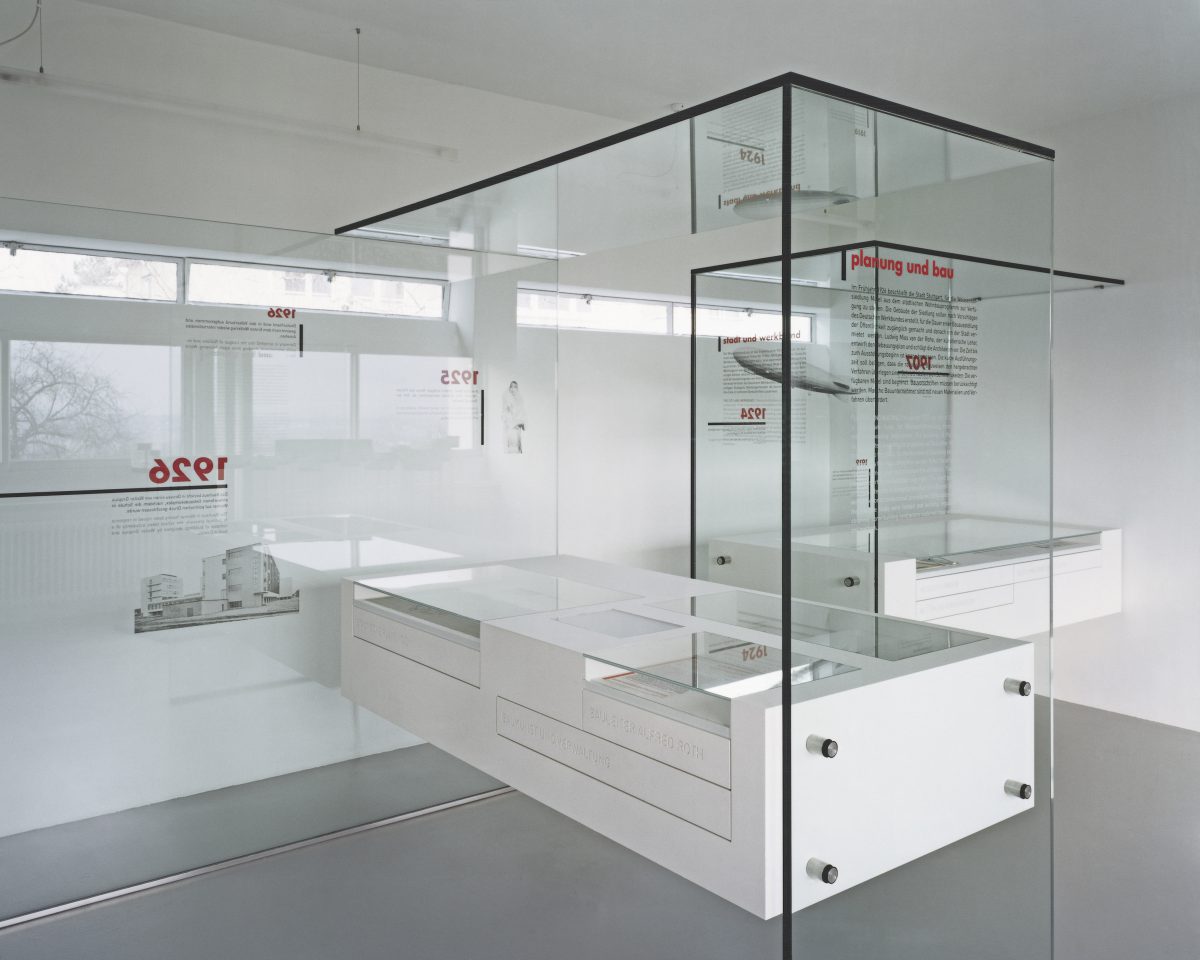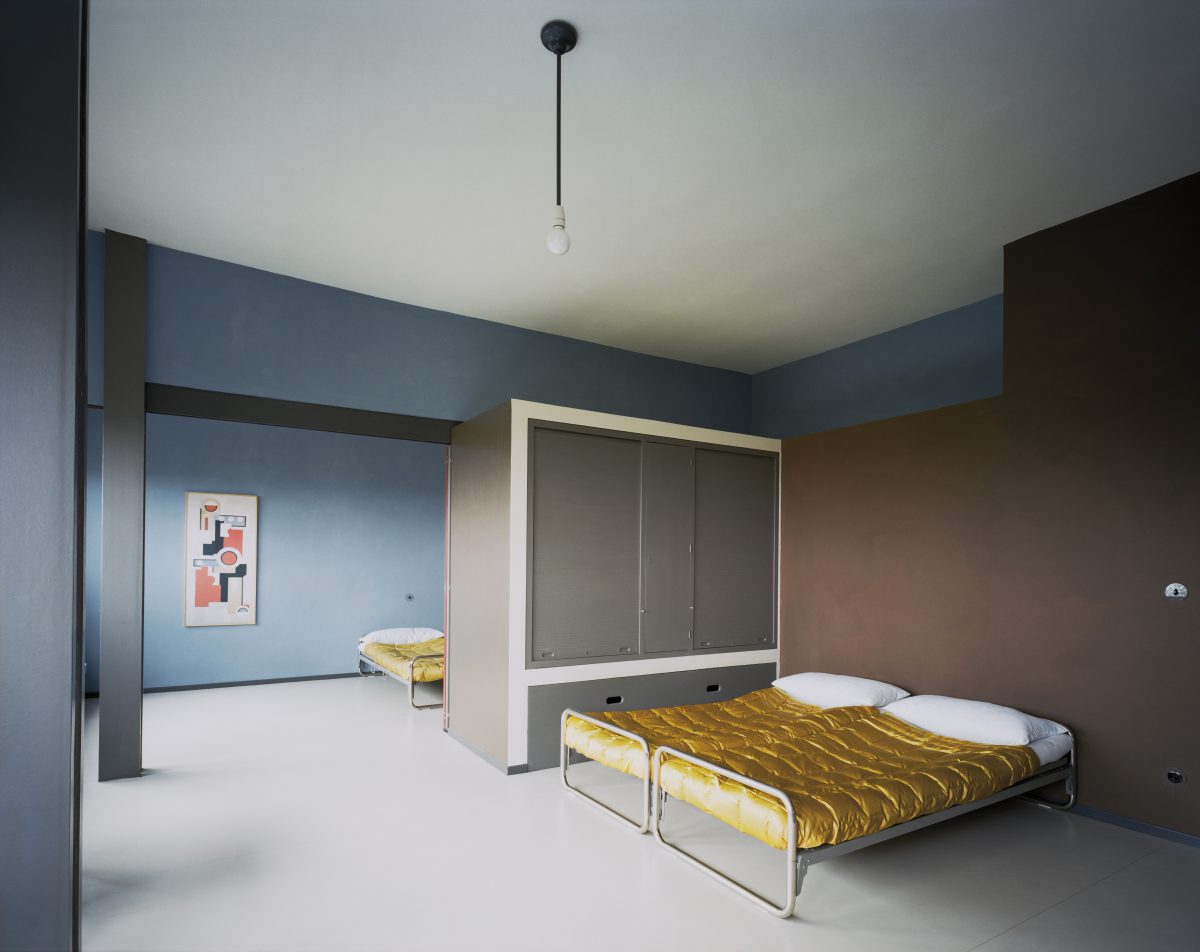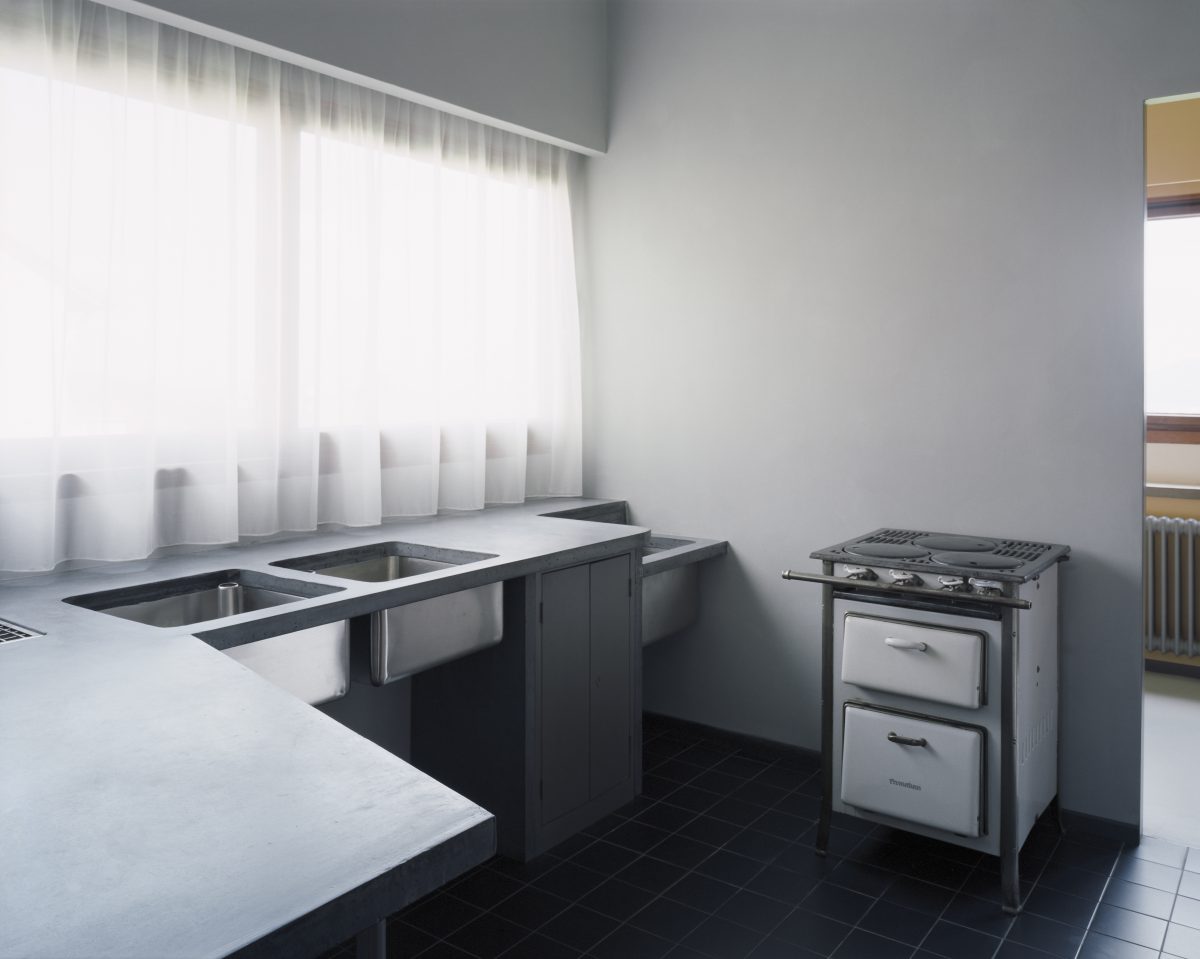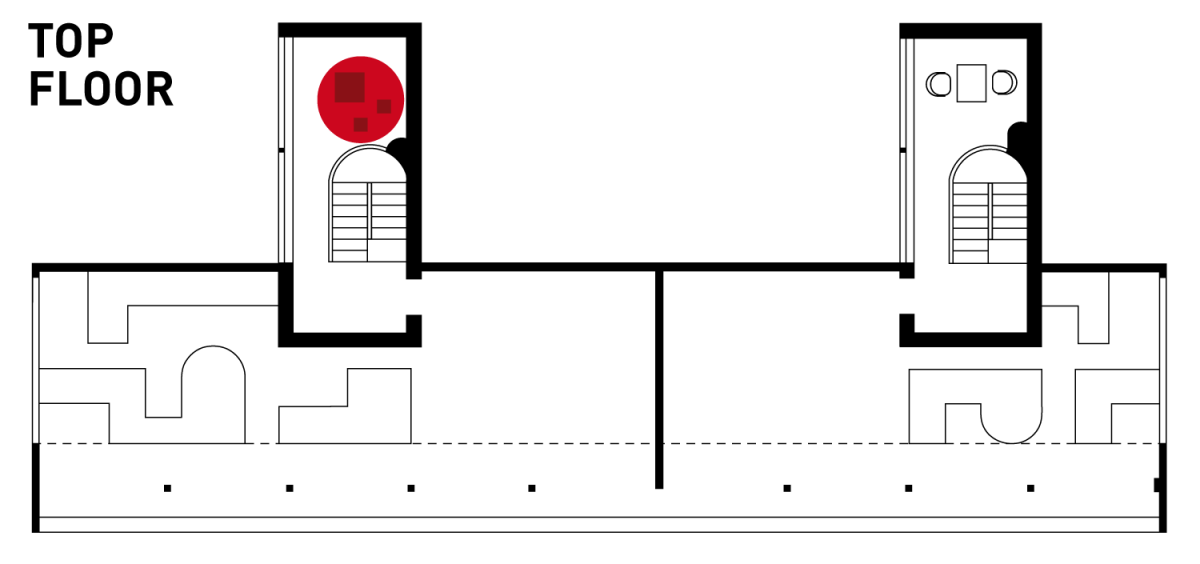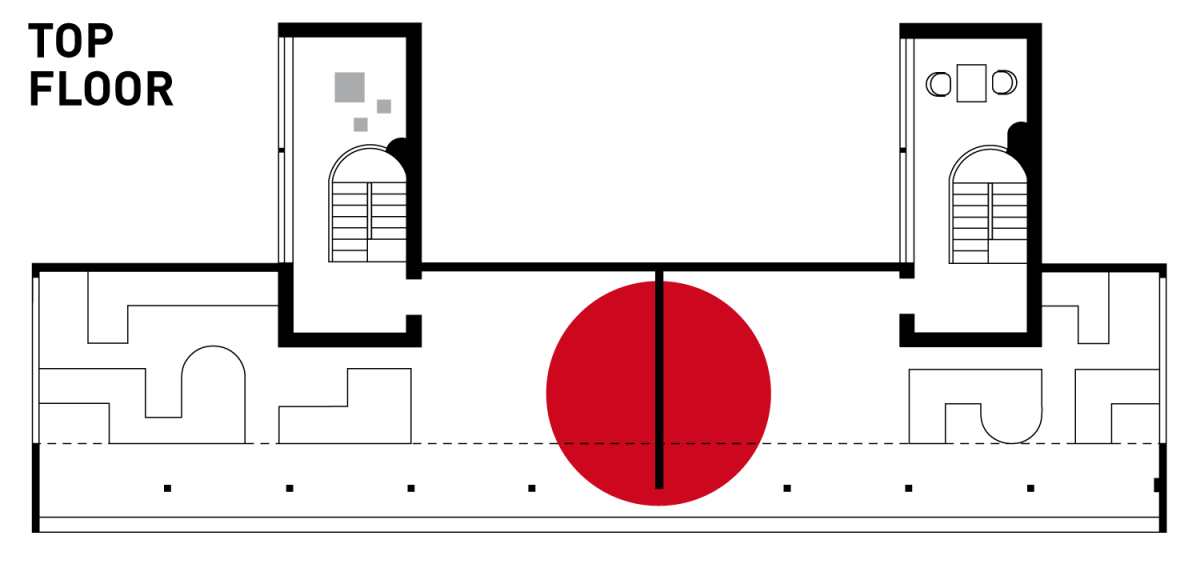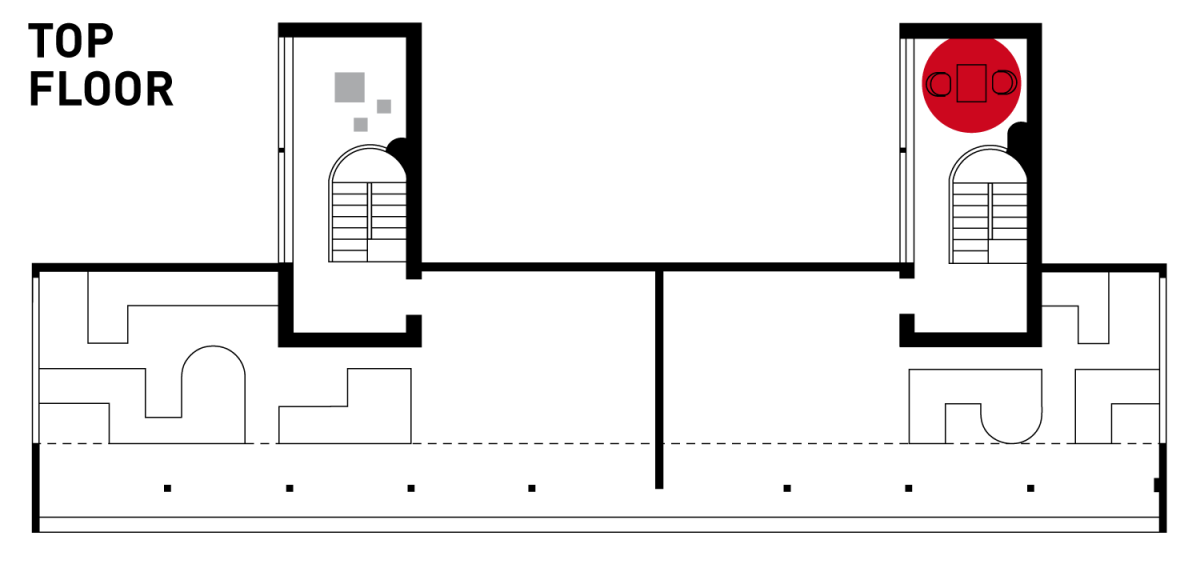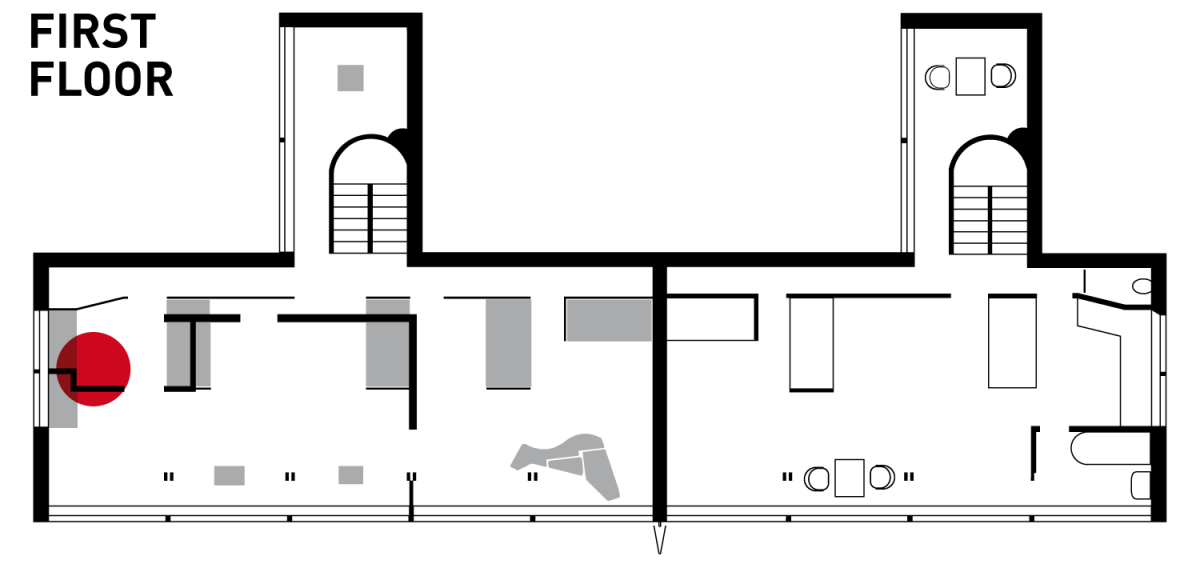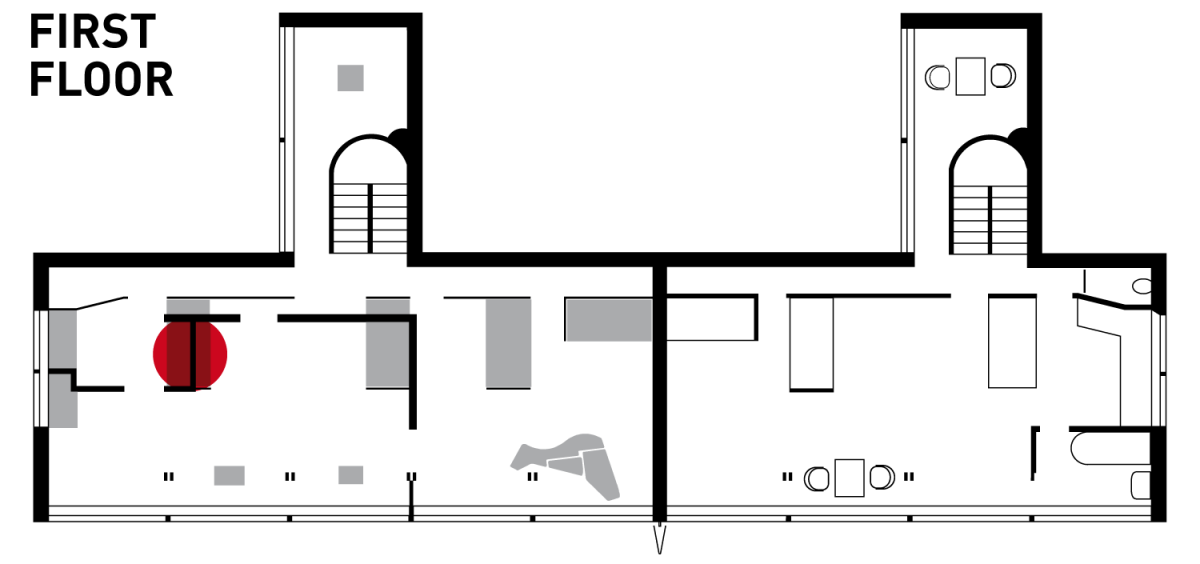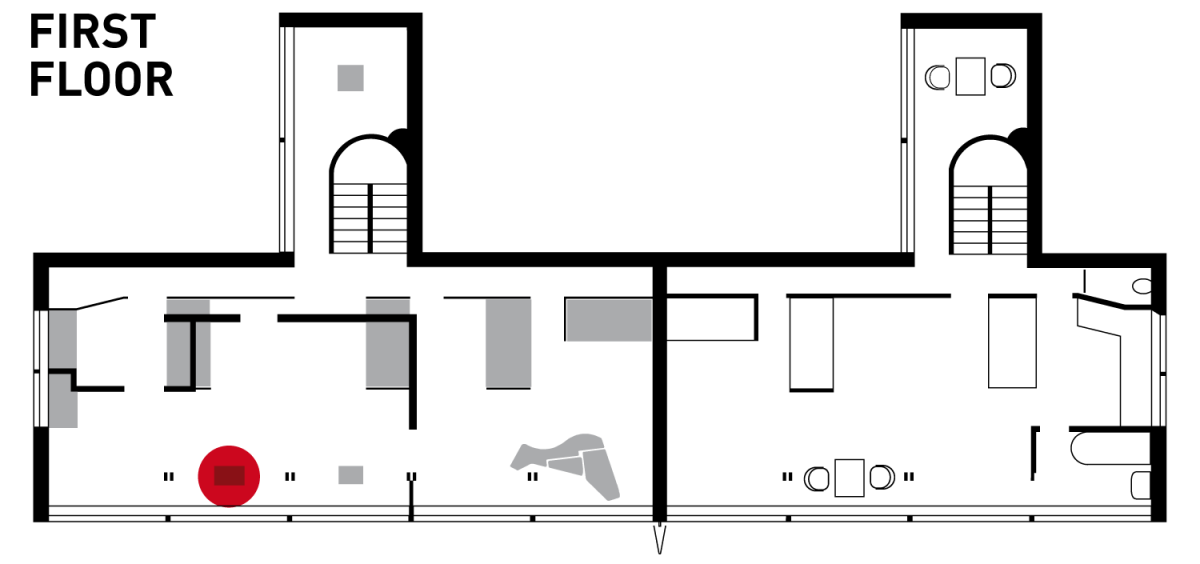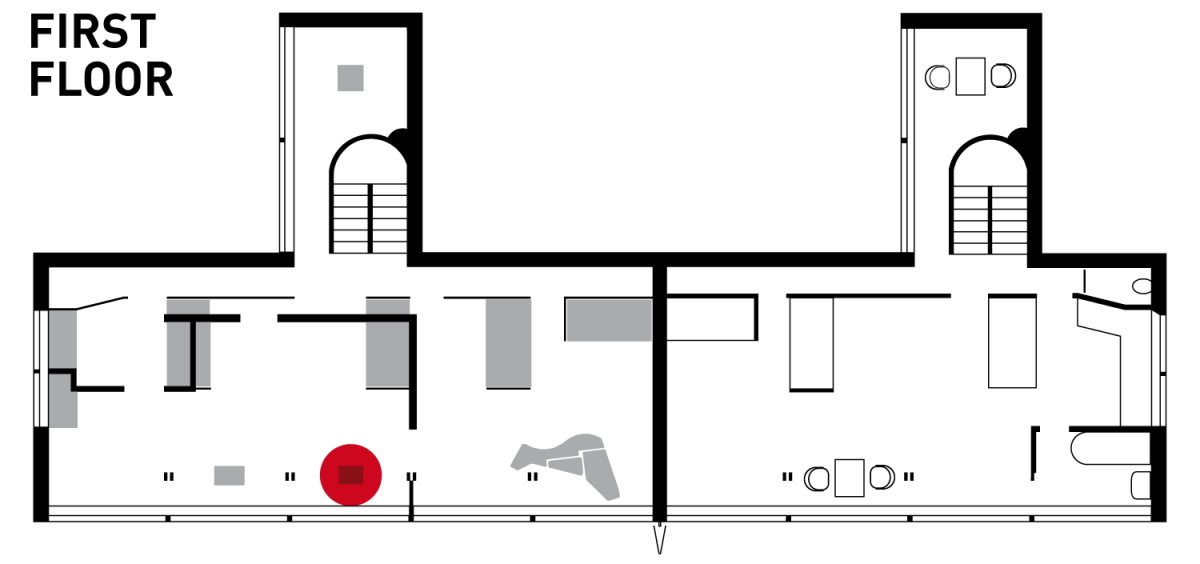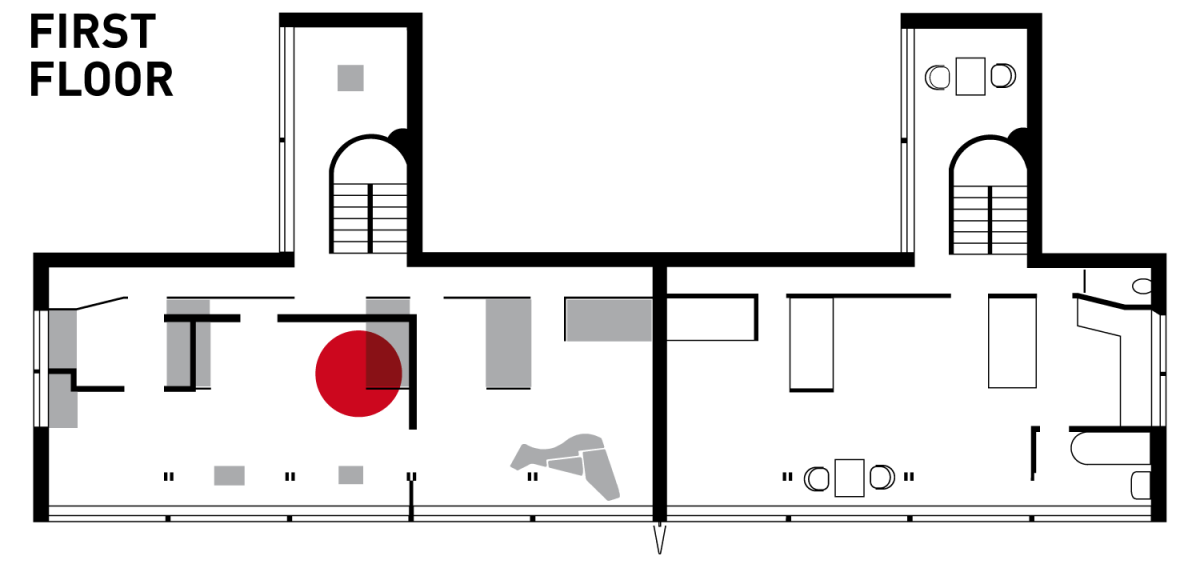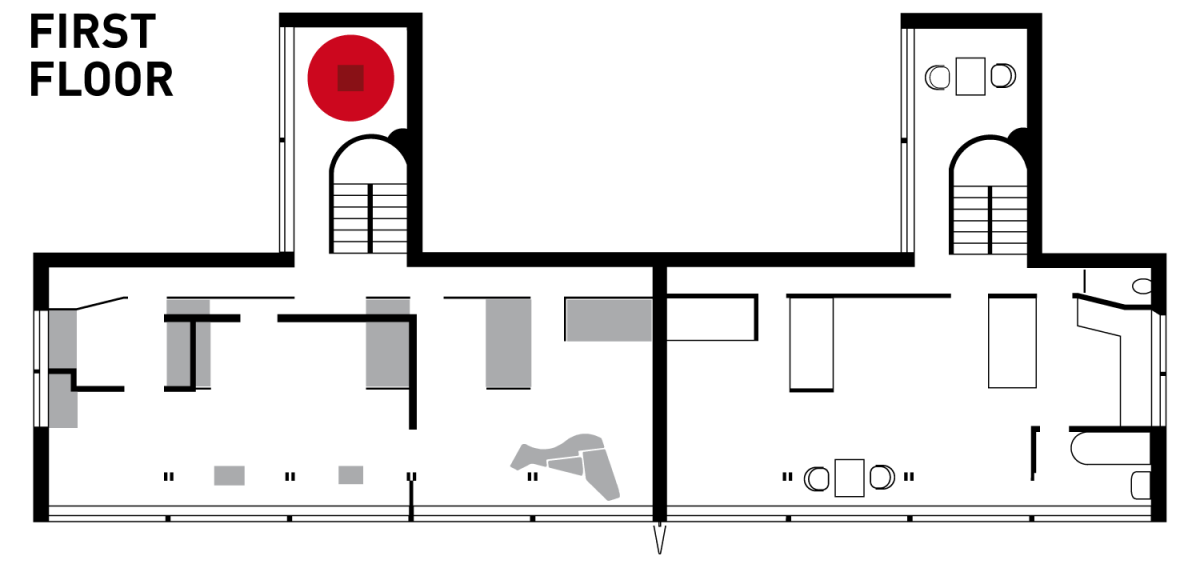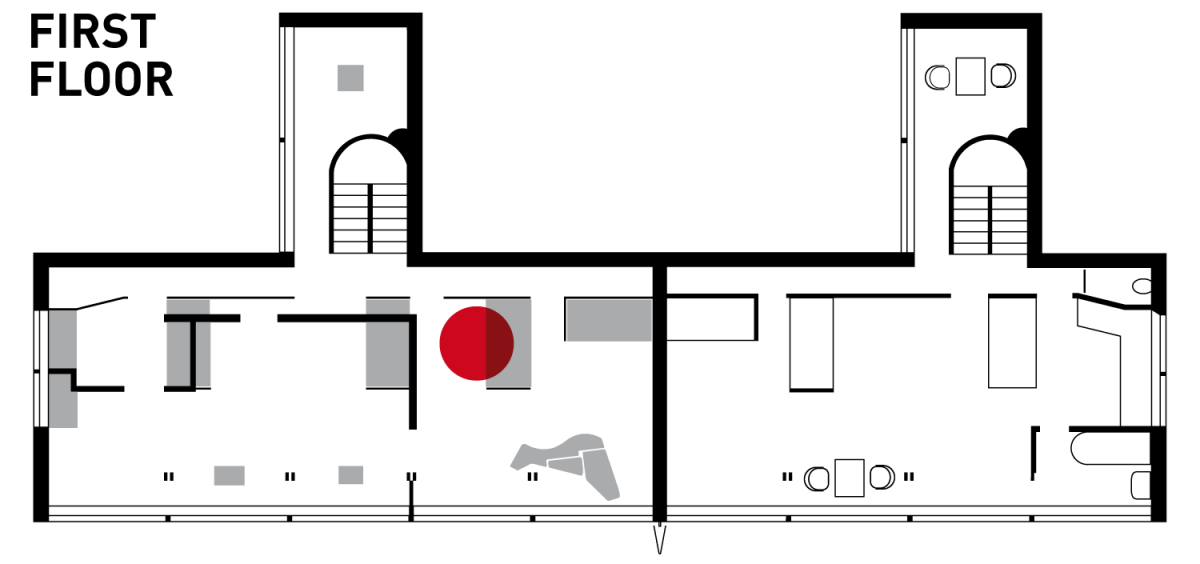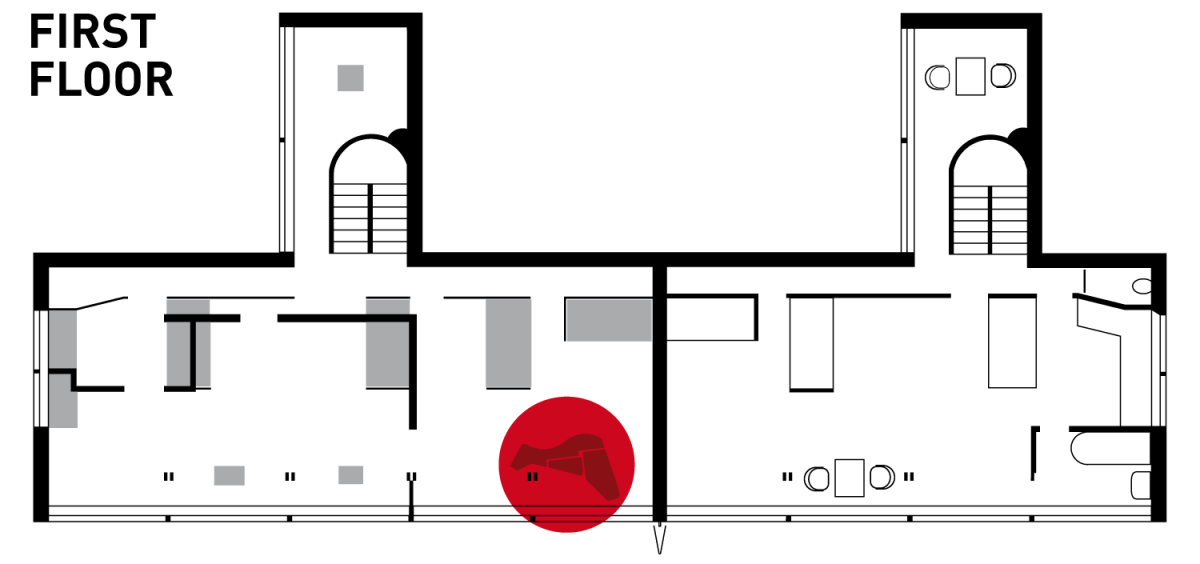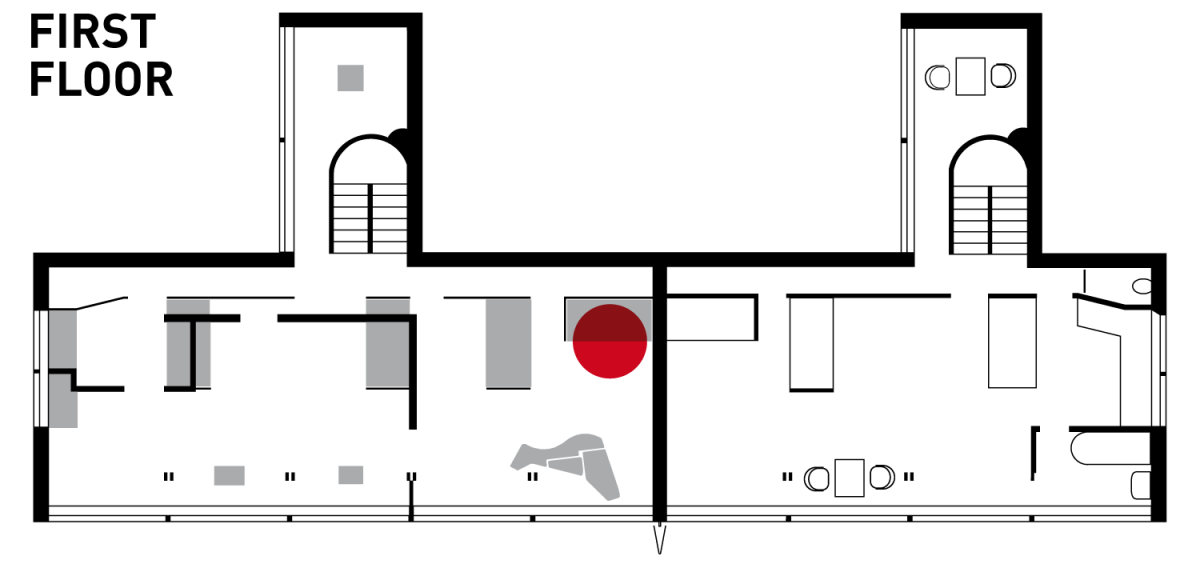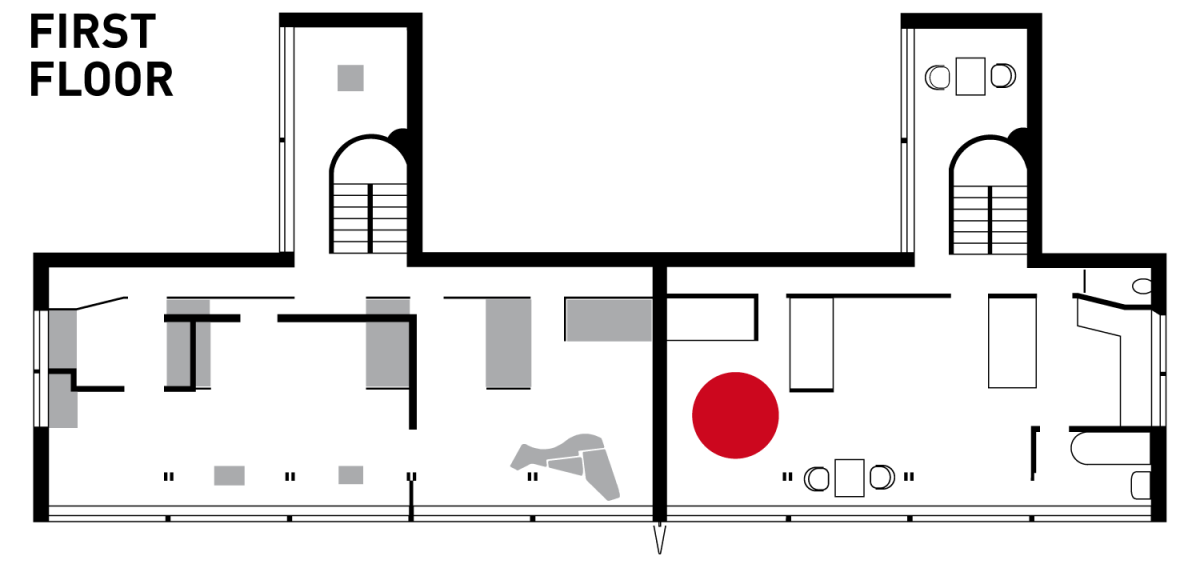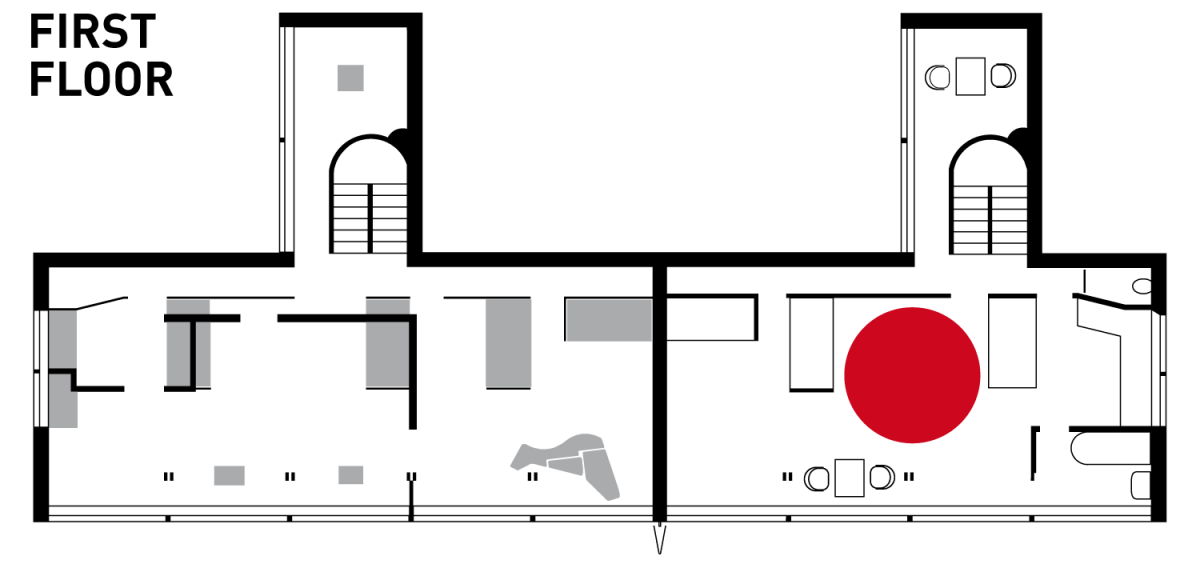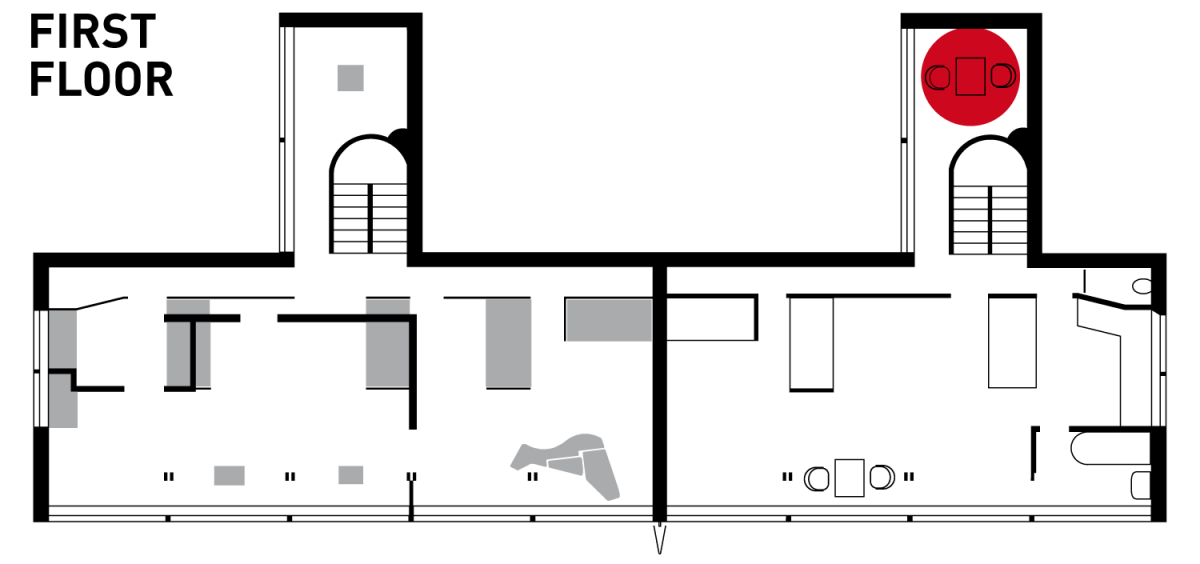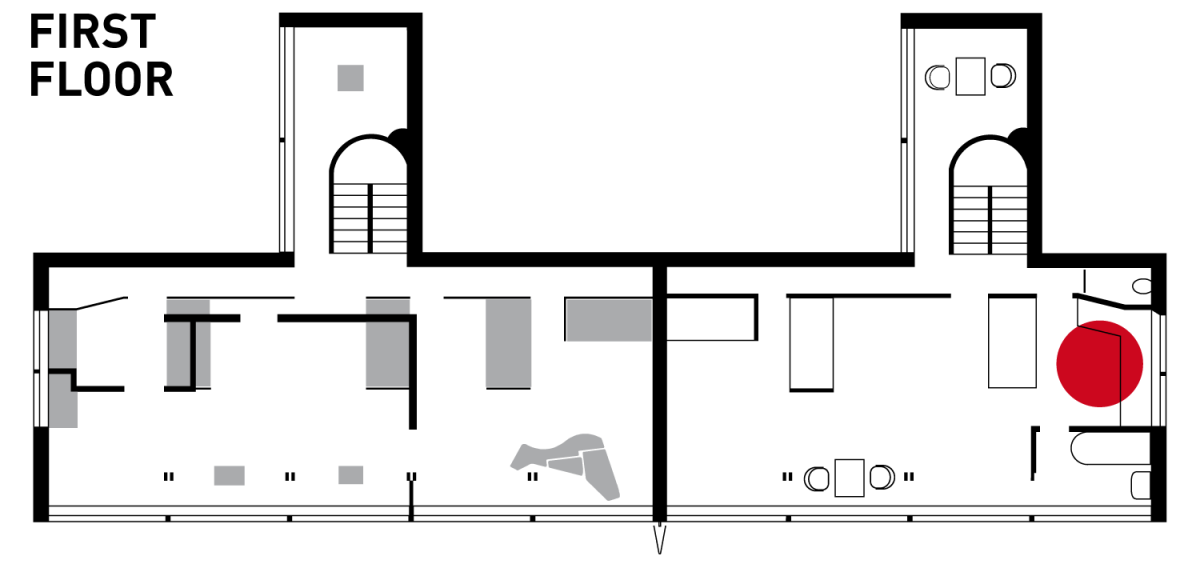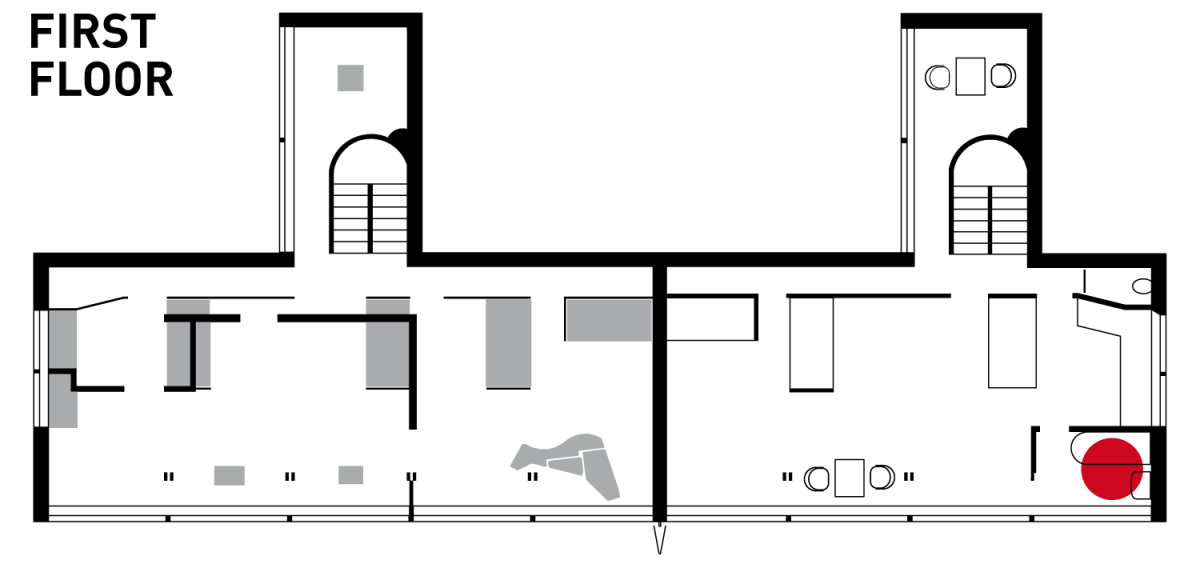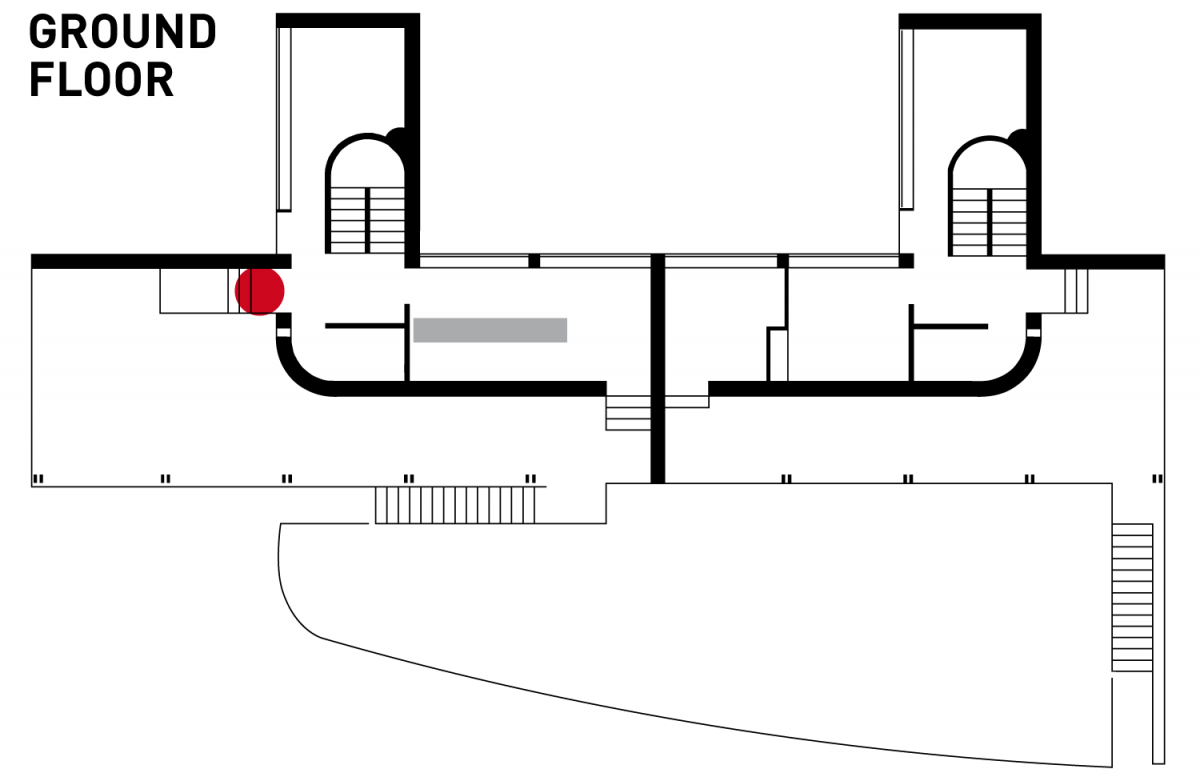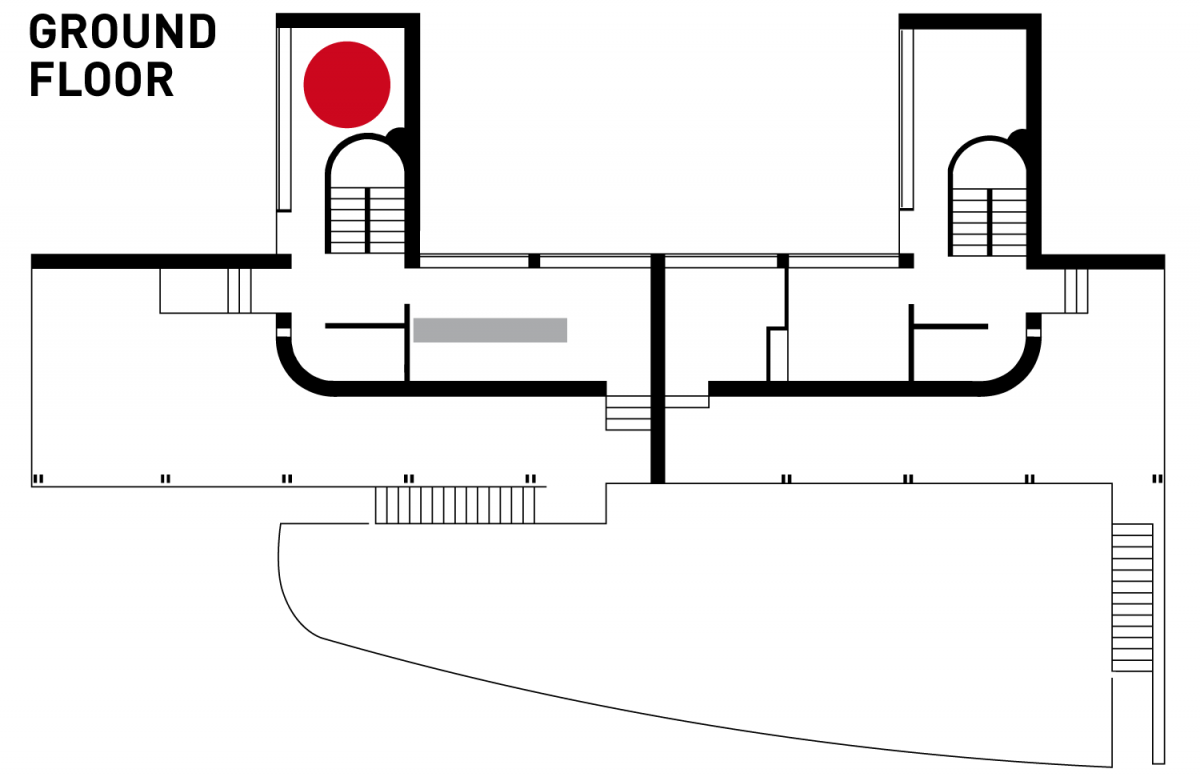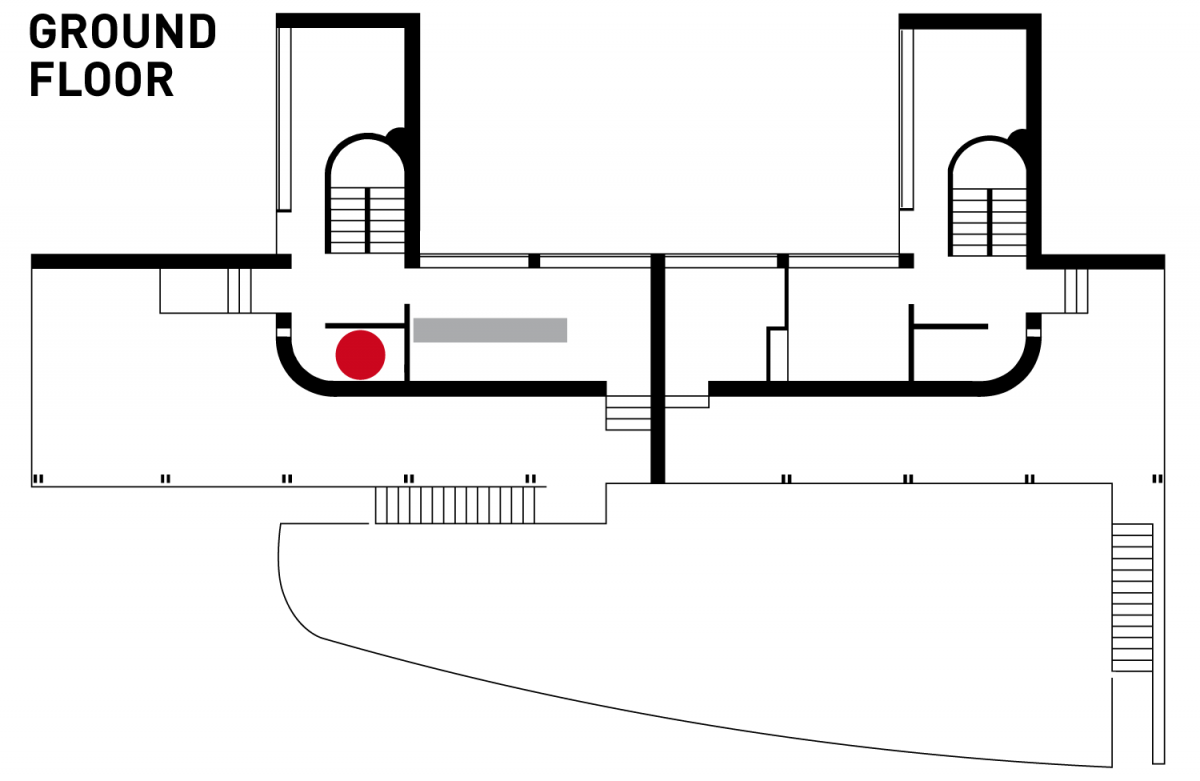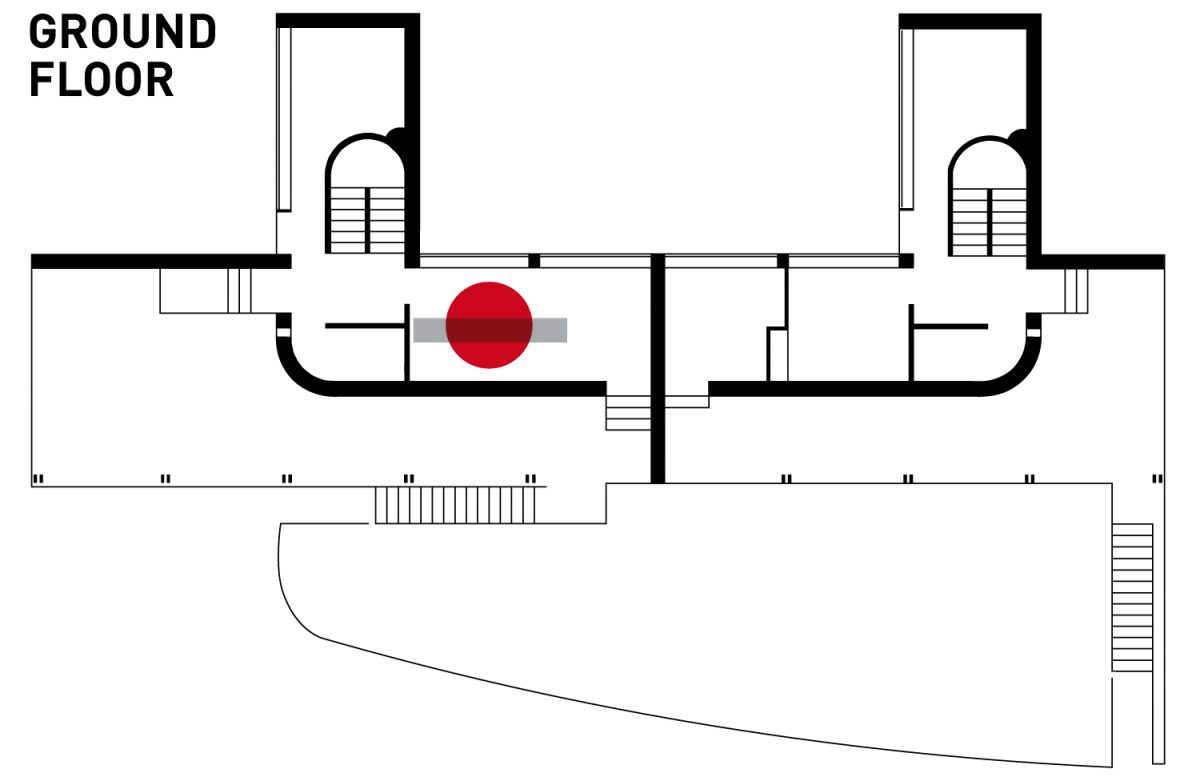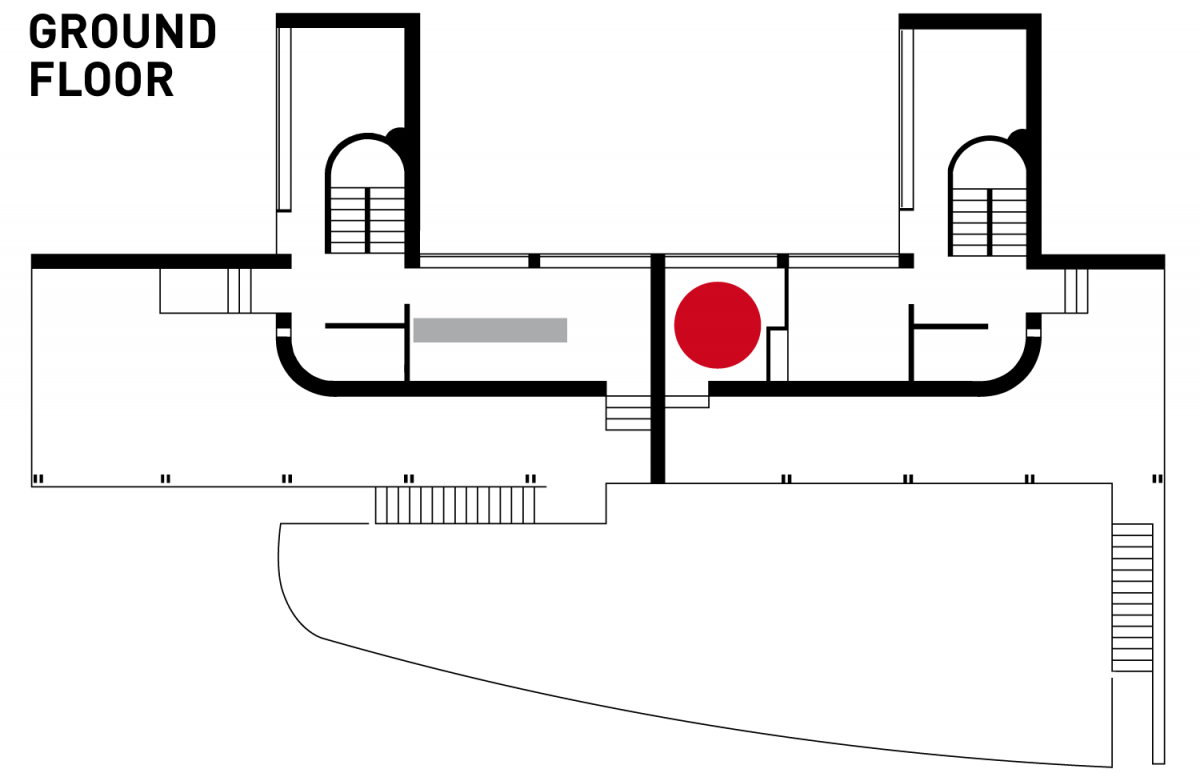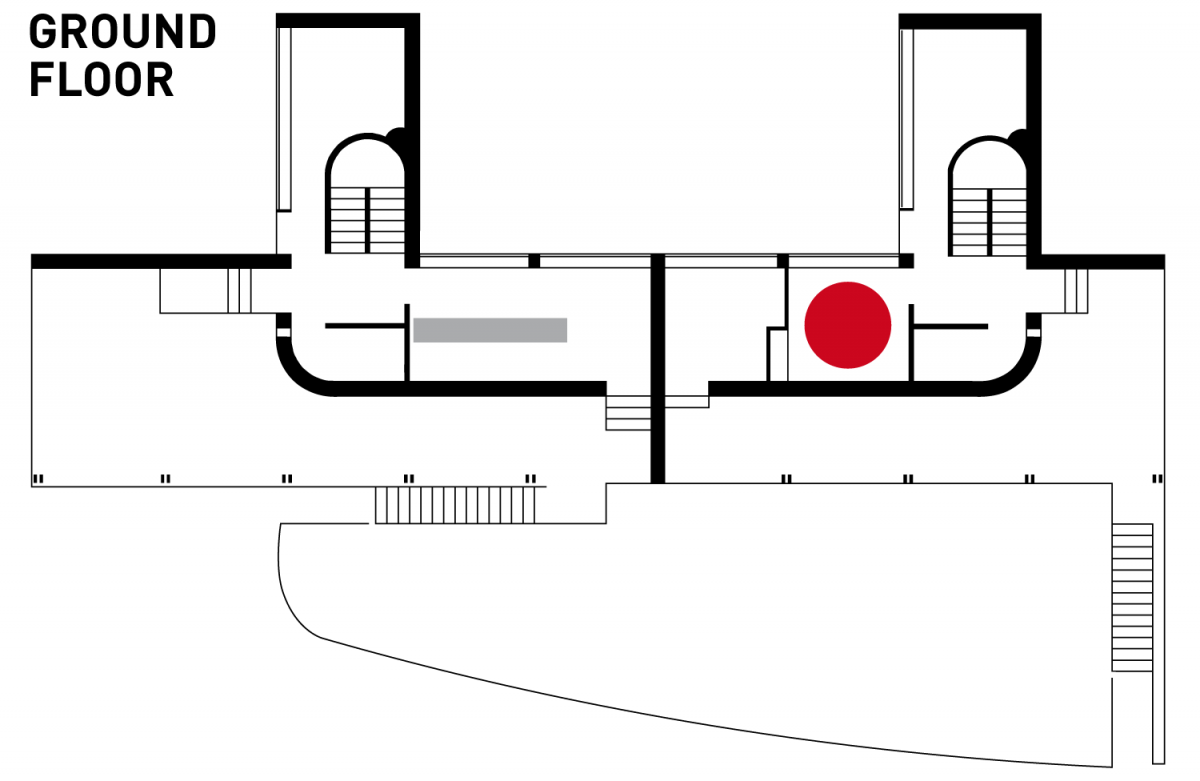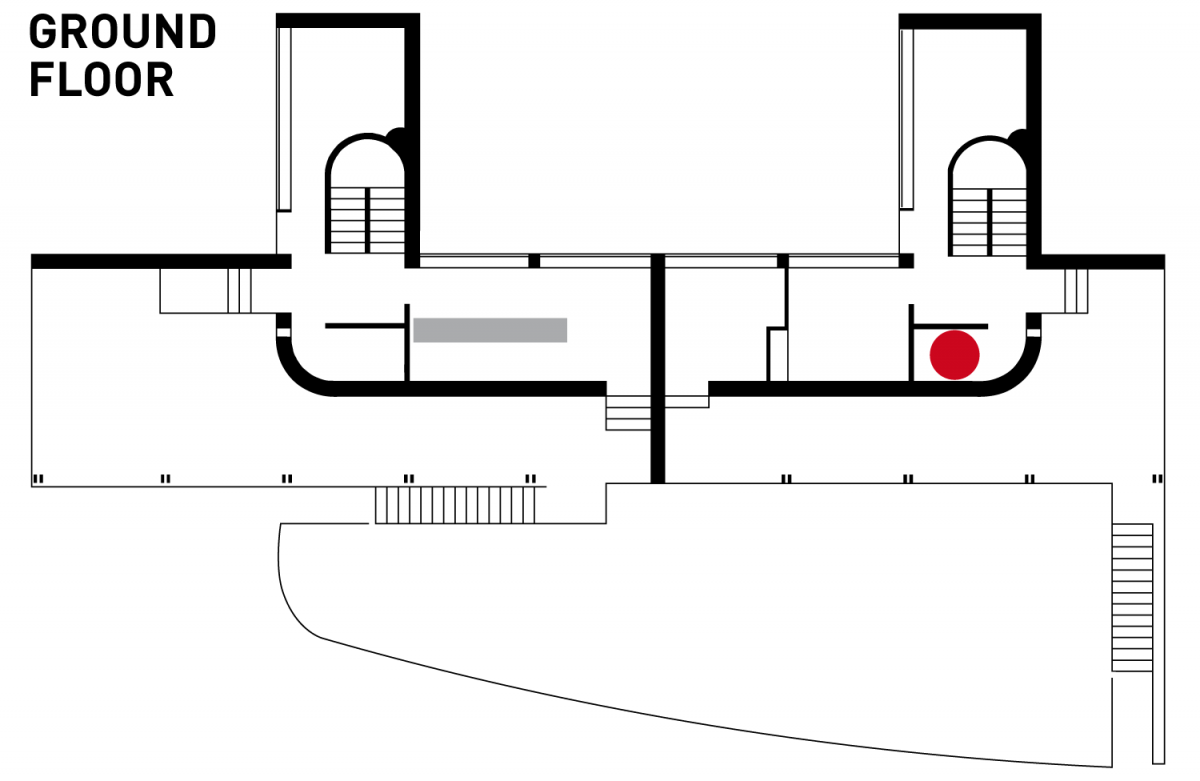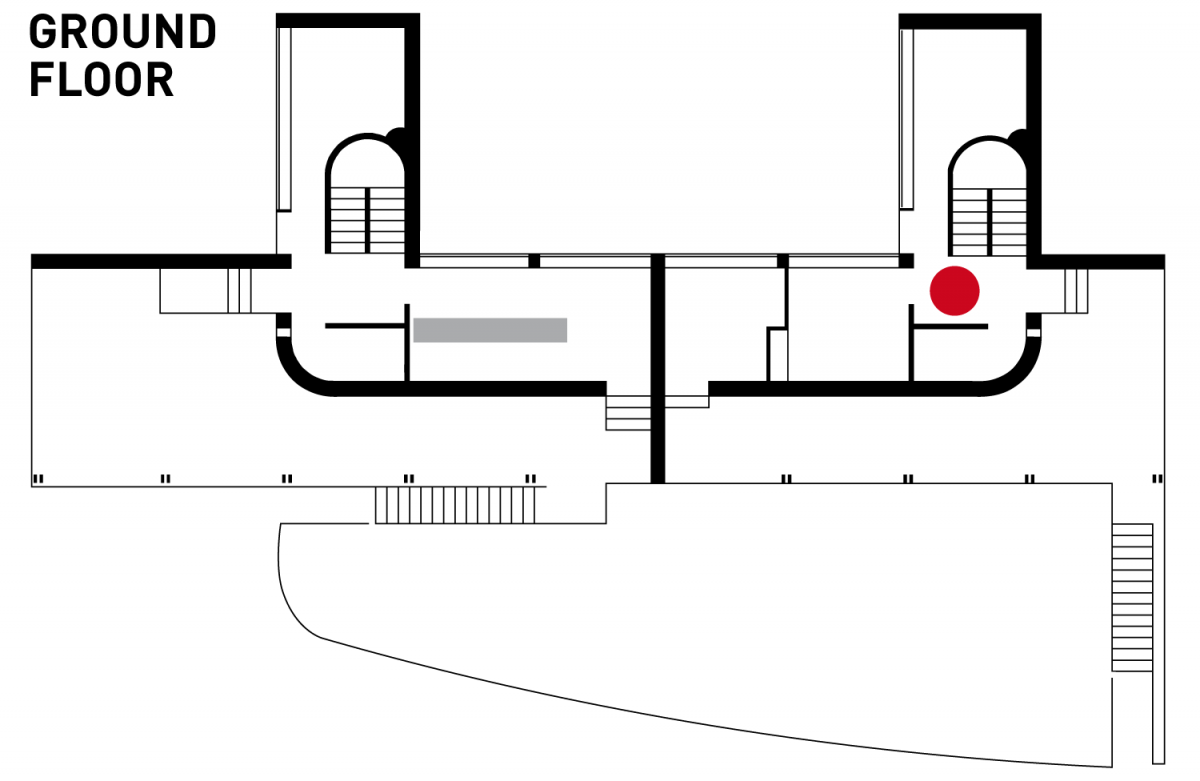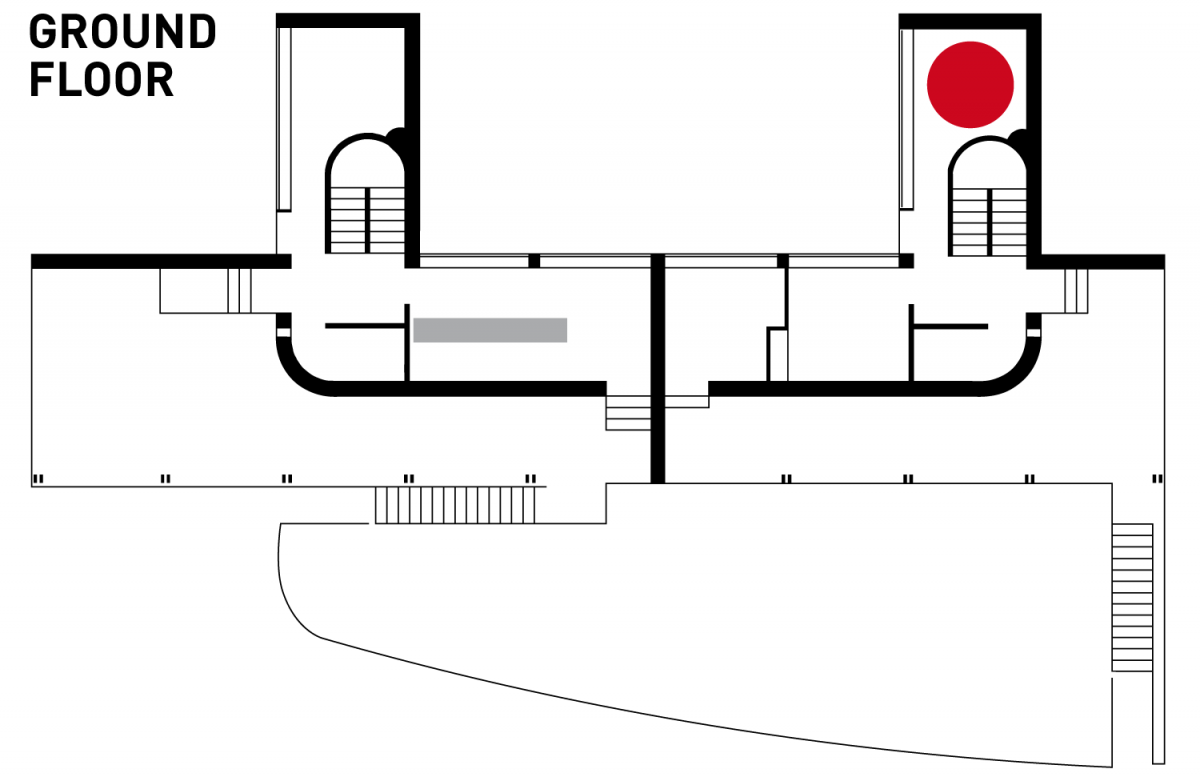Welcome
In 1927 the architects Le Corbusier and Pierre Jeanneret designed two semidetached houses for an exhibition entitled Die Wohnung (The Dwelling) for the Deutscher Werkbund. This building has been the location of the Weissenhof Museum since 2006. It is the only building in the Weissenhof Estate that is open to visitors. In 2016 the building became listed as a UNESCO World Heritage Site along with the neighboring single-family dwelling by Le Corbusier.
Visiting the Exhibition
Both halves of the former residential building, each of which have been given different focuses, can be viewed during the visit.
The history of the Weissenhof Estate is presented in the left half of the building, including its seventeen architects with models, photographs, plans, and various objects. The exhibition is organized chronologically and spans the period from 1907, when the Deutscher Werkbund was founded, to 2006, when the museum was opened. The museum design is based on the original floorplan.
Visitors can experience Le Corbusier’s design of a “transformable dwelling” from 1927 in the right half of the building. The restored floorplan, the changeable space, the furniture, and the color schemes are based on historic sources and the results of conservational studies.
Emma’s discovery tour
Accompany Emma on her visit to the Weissenhof Museum and be surprised what she discovers
Short Films on the Weissenhofmuseum
Flat Roof versus Pitched Roof
Director Anja Krämer tells of a heated debate between tradition and modernity.
Willi Baumeister: Painting and Design
Employee Michaela Jehle on the exciting jack-of-all-trades Willi Baumeister
The Colorful Weissenhof Estate
A misleading name – The Weissenhofsiedlung is not white
Incessant Condensation Drain
Le Corbusier’s innovative windows and a reinvented phenomenon
How the Museum Was Created
Following the Werkbund exhibition, the buildings at the Weissenhof Estate were rented out by the city of Stuttgart. In 1928 Anton Kolig, an art professor, moved into the two semidetached houses by Le Corbusier. Other tenants followed, including many alterations and changes. The German Reich bought the estate in 1939 with the intention of tearing it down, but this was prevented by the beginning of World War II. The apartments continued to be rented out, even when the federal government of Germany took over the property at the end of the war. Following a long period of neglect, the estate was extensively restored in the 1980s, during which the right half of the Le Corbusier two semidetached houses were restored inside to a state that was “similar to the original.”
It was not until 2002 that the city of Stuttgart was given the opportunity to buy Le Corbusier’s two semidetached houses and make it into a museum. Together with the Wüstenrot Stiftung and their historic conservation board, the building was painstakingly restored following extensive studies. The city of Stuttgart then developed a museum concept and provided furniture and display objects. Weissenhof Museum opened its doors to the public on October 26, 2006.

